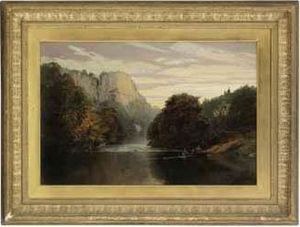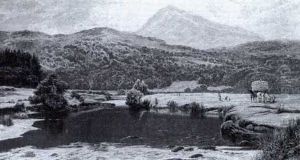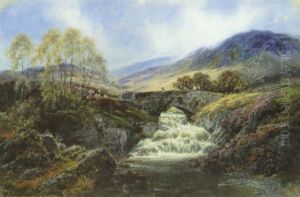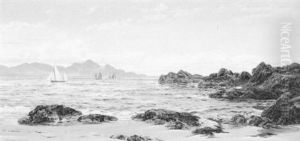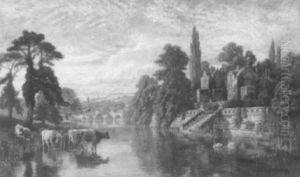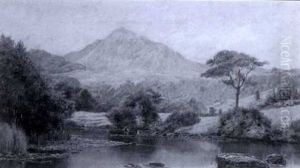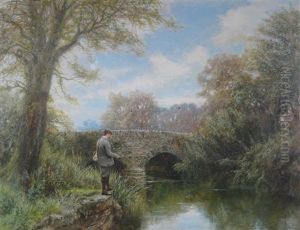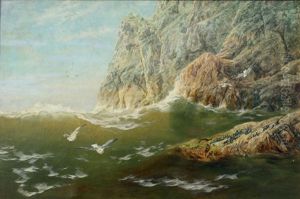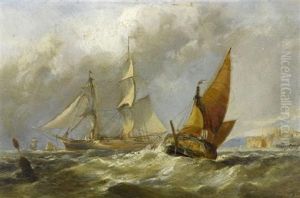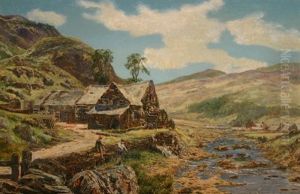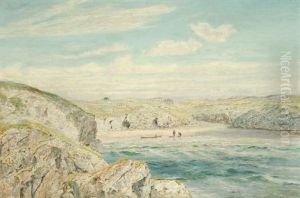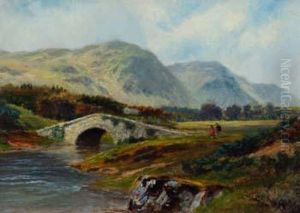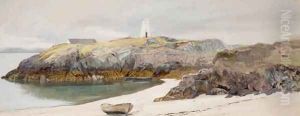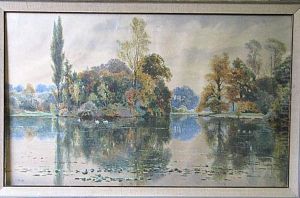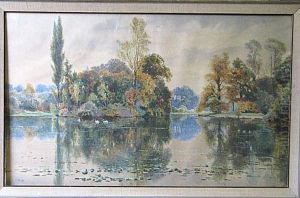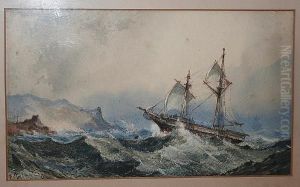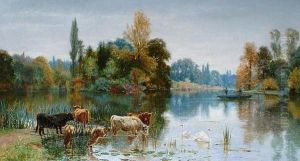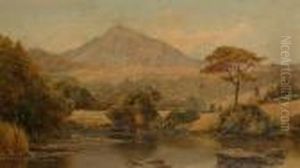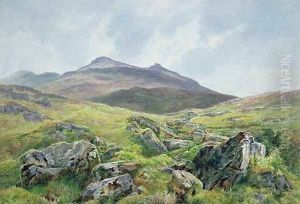Frederick William Hayes Paintings
Frederick William Hayes, born in Liverpool, England, was a distinguished late 19th and early 20th-century British artist known for his landscape and maritime paintings. His work is characterized by its detailed depiction of nature and the sea, often capturing the rugged beauty of the British Isles and beyond. Hayes was a member of the prestigious Royal Institute of Painters in Water Colours and the Royal Society of British Artists, which highlighted his recognition among contemporaries and his contribution to British art.
Educated at the Liverpool Institute and then at the Liverpool School of Art, Hayes honed his skills under the guidance of John Finnie, developing a keen eye for detail and a profound appreciation for the natural world. His early work was influenced by the Pre-Raphaelite Brotherhood, evident in his meticulous attention to detail and vibrant use of color. However, as his style evolved, Hayes began to incorporate broader, more impressionistic strokes, capturing the essence and atmosphere of his subjects with increasing sensitivity and emotional depth.
Throughout his career, Hayes traveled extensively, finding inspiration in the diverse landscapes of the British countryside, the rugged coasts of Ireland, and the serene beauty of the Italian lakes. These journeys were pivotal in the development of his artistic vision, allowing him to explore and capture a wide range of natural sceneries. His paintings of the Scottish Highlands and the West of Ireland, in particular, received critical acclaim for their dramatic depiction of light and shadow, which vividly conveyed the tumultuous beauty of these regions.
Hayes exhibited his work at various prestigious venues, including the Royal Academy, the Royal Institute of Oil Painters, and the Walker Art Gallery in Liverpool. His paintings were celebrated for their technical skill, emotional depth, and ability to transport the viewer to the scenes depicted.
Despite his success, Hayes maintained a relatively low profile, focusing on his art rather than public recognition. Today, his work is held in several public collections, cherished for its contribution to the landscape and maritime genres of British art. Hayes's legacy endures, a testament to his passion for the natural world and his mastery of capturing its fleeting beauty on canvas.
